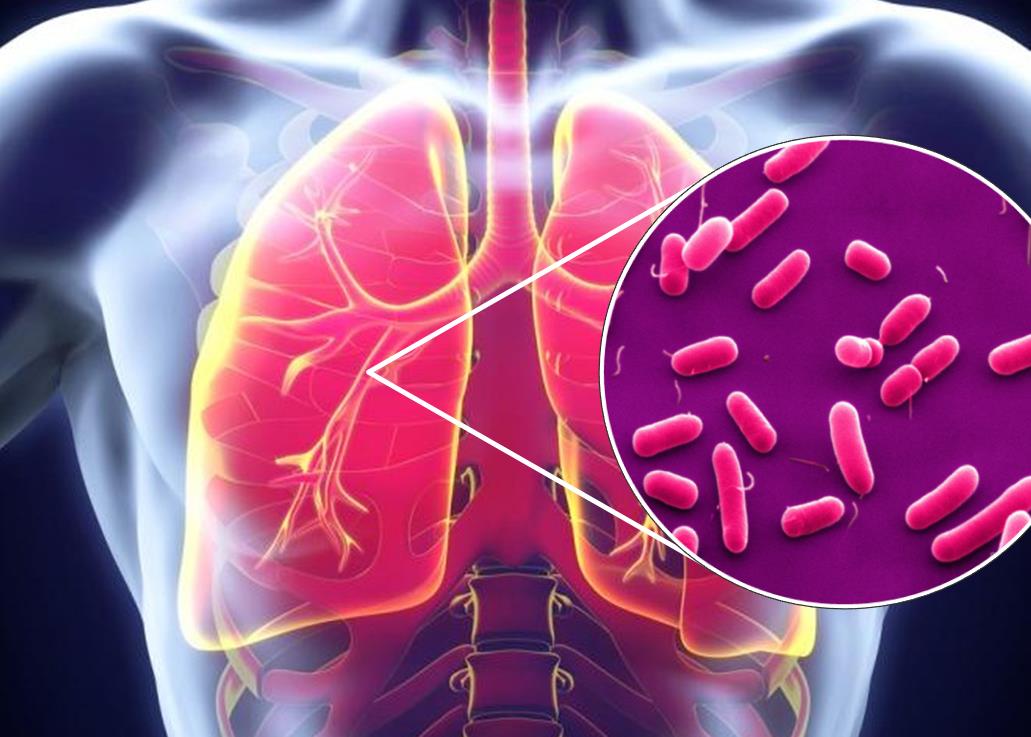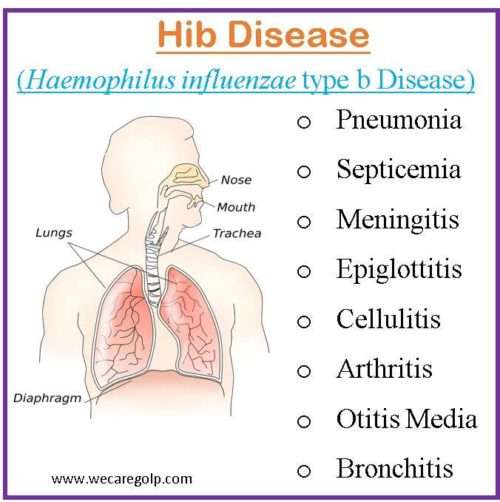
About Haemophiles influenzae Disease
KEY POINTS –
- Bacteria called Haemophilus influenzae can cause many types of infections.
- Some of these infections are mild, while others are serious.
- In spite of its name, H. influenzae doesn’t cause the flu.
- Vaccines can prevent infections from one type of H. influenzae, type b or Hib.

Types
H. influenzae can cause many different types of infections. These infections range from mild, like ear infections, to serious, like bloodstream infections.
Serious infections
The most common serious infections caused by H. influenzae are:
- Pneumonia (a lung infection)
- Bloodstream infection
- Meningitis (swelling of the lining of the brain and spinal cord)
- Epiglotittis (swelling of the throat)
- Cellulitis (skin infection)
- Infectious arthritis (swelling of the joint)
Mild infections
H. influenzae are a common cause of ear infections in children and bronchitis (chest cold) in adults.
Symptoms
H. influenzae can cause many different types of infections. Symptoms depend on the part of the body that's infected. Serious infections can result in long-term health problems and death.
Experts don't know how long it takes after H. influenzae enter a person's body for someone to get sick. However, it could take as little as a few days before symptoms appear.
Symptoms of H. influenzae disease depend on which part of the body is infected. Generally, the symptoms are similar to other bacterial infections in that part of the body.
Serious infections
Pneumonia
Symptoms of pneumonia (a lung infection) usually include:
- Fever, chills, or sweating
- Cough
- Shortness of breath or difficulty breathing
- Chest pain
- Headache
- Muscle pain or aches
- Excessive tiredness
Bloodstream infection
Symptoms of bloodstream infection usually include:
- Fever and chills
- Excessive tiredness
- Pain in the belly
- Diarrhea or nausea with or without vomiting
- Anxiety
- Shortness of breath or difficulty breathing
- Altered mental status (confusion)
A bloodstream infection from H. influenzae can occur with or without other infections, such as pneumonia or meningitis.
Meningitis
Symptoms of meningitis typically include sudden onset of:
- Fever
- Headache
- Stiff neck
- Nausea with or without vomiting
- Photophobia (eyes being more sensitive to light)
- Altered mental status (confusion)
Babies with meningitis may:
- Be irritable
- Vomit
- Feed poorly
- Appear to be slow or inactive
- Have abnormal reflexes
Mild infections
Ear infections
Symptoms of ear infections can include:
- Ear pain
- A red, swollen ear drum
- Fever
- Sleepiness
Bronchitis
Bronchitis is when the airways that carry air to the lungs get inflamed or swell. Symptoms of bronchitis can include:
- Coughing with or without mucus
- Soreness in the chest
- Excessive tiredness
- Mild headache
- Mild body aches
- Sore throat
Complications and when to seek help
Serious infections can result in sepsis, long-term problems, or death. Sepsis is a life-threatening emergency resulting from the body's extreme response to infection.
Long-term problems can include:
- Brain damage or hearing loss from meningitis.
- Loss of limbs from bloodstream infections.
Complications are rare and not usually severe for mild infections like bronchitis and ear infections.
Experts don't know how long it takes after H. influenzae enter a person's body for someone to get sick. However, it could take as little as a few days before symptoms appear.
Symptoms of H. influenzae disease depend on which part of the body is infected. Generally, the symptoms are similar to other bacterial infections in that part of the body.
Serious infections
Pneumonia
Symptoms of pneumonia (a lung infection) usually include:
- Fever, chills, or sweating
- Cough
- Shortness of breath or difficulty breathing
- Chest pain
- Headache
- Muscle pain or aches
- Excessive tiredness
Bloodstream infection
Symptoms of bloodstream infection usually include:
- Fever and chills
- Excessive tiredness
- Pain in the belly
- Diarrhea or nausea with or without vomiting
- Anxiety
- Shortness of breath or difficulty breathing
- Altered mental status (confusion)
A bloodstream infection from H. influenzae can occur with or without other infections, such as pneumonia or meningitis.
Meningitis
Symptoms of meningitis typically include sudden onset of:
- Fever
- Headache
- Stiff neck
- Nausea with or without vomiting
- Photophobia (eyes being more sensitive to light)
- Altered mental status (confusion)
Babies with meningitis may:
- Be irritable
- Vomit
- Feed poorly
- Appear to be slow or inactive
- Have abnormal reflexes
Mild infections
Ear infections
Symptoms of ear infections can include:
- Ear pain
- A red, swollen ear drum
- Fever
- Sleepiness
Bronchitis
Bronchitis is when the airways that carry air to the lungs get inflamed or swell. Symptoms of bronchitis can include:
- Coughing with or without mucus
- Soreness in the chest
- Excessive tiredness
- Mild headache
- Mild body aches
- Sore throat
Complications and when to seek help
Serious infections can result in sepsis, long-term problems, or death. Sepsis is a life-threatening emergency resulting from the body's extreme response to infection.
Long-term problems can include:
- Brain damage or hearing loss from meningitis.
- Loss of limbs from bloodstream infections.






